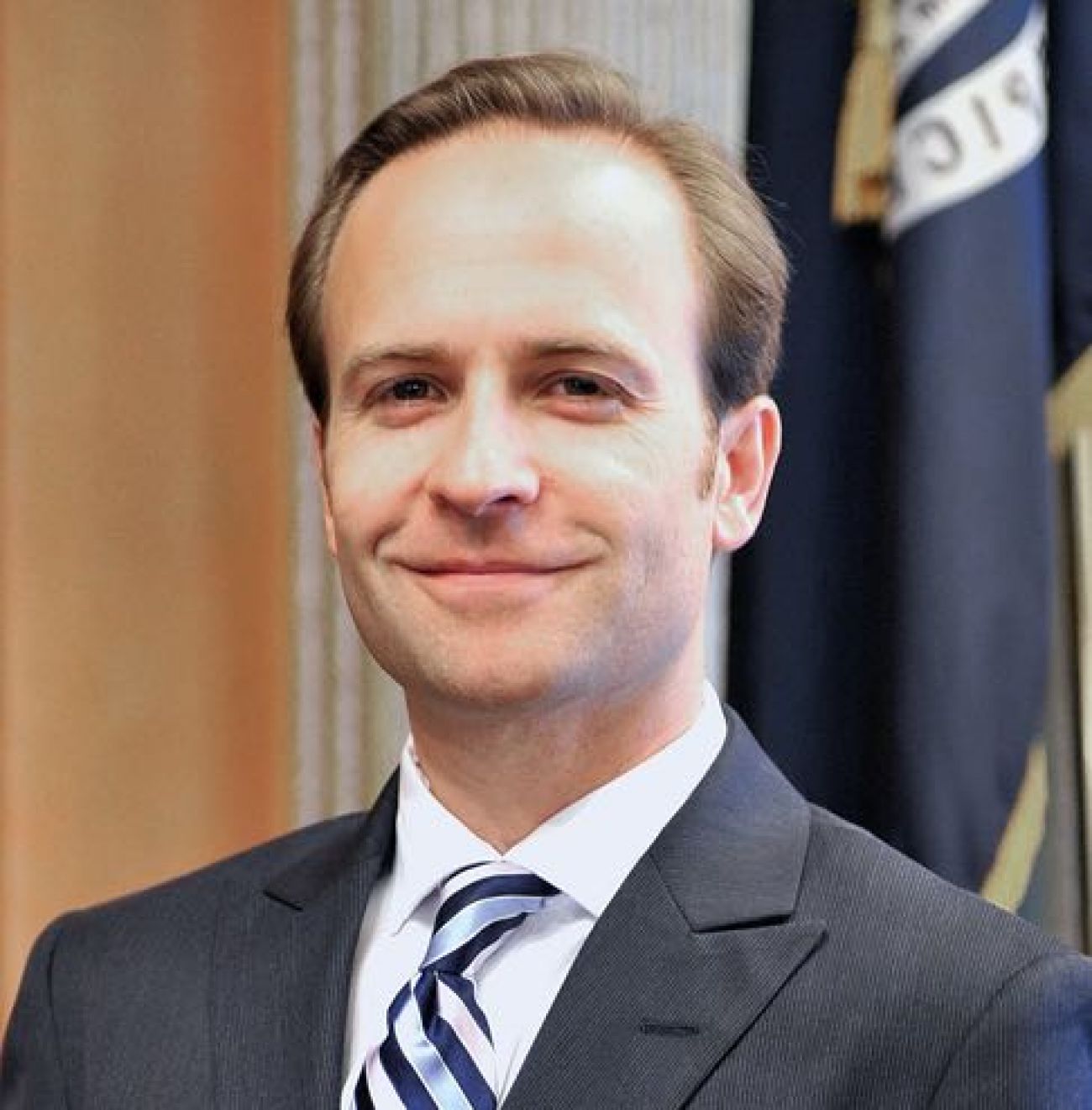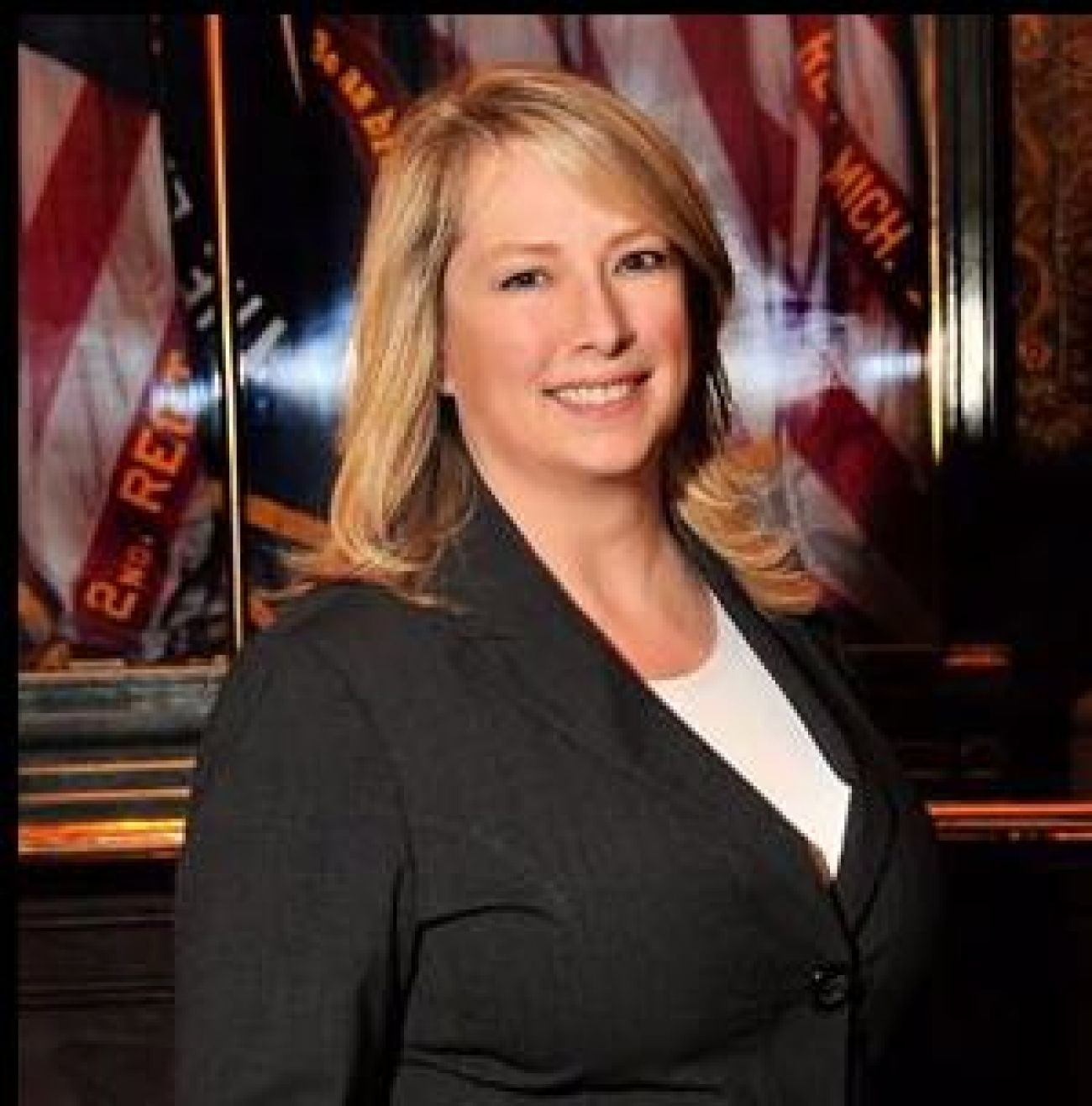What Democrats’ Medicare for All plans would mean for Michigan

When Lee Green hurt his back and lost the ability to move his left leg, doctors had him up for an MRI within four hours and in surgery within six hours.
His total bill for costly care that cured his temporary paralysis and has him back on his mountain bike: zero dollars.
Eight years ago, Green moved from his native Michigan to Canada, where the country’s government-run insurance system guarantees health care for all residents without premiums, deductibles or co-payments. It’s not without its faults, including long wait times for some specialist visits, but “I would say between Canadian problems and American problems I will definitely take Canadian problems,” Green told Bridge Magazine.
- Related: How Democratic presidential candidates would raise taxes to pay for plans
- Related: How Democratic presidential candidates want to change health care, Medicare
- Related: Fact Squad | Sanders promises Medicare for All will cut Michigan auto rates
- Related: Michigan voters: Roads stink, but don’t ask us to pay for fixes
He has a unique perspective. The 61-year-old has not only been a patient in both systems, he’s a physician who chairs the Department of Family Medicine at the University of Alberta, which he joined after a 26-year career at the University of Michigan.
“It’s much simpler in Canada: You go in, and you get health care. You don’t get the bill,” he said. “Nobody up here pretends that it’s free. We are all quite well aware that we pay for it in taxes, but the view of it in Canada is that’s just a fairer and more sensible way to do it.”

As the Michigan presidential primary nears on March 10, single-payer health care systems like Canada’s are the subject of renewed focus as Democratic presidential hopefuls Sen. Bernie Sanders of Vermont and Sen. Elizabeth Warren of Massachusetts push plans for government insurance programs they’ve dubbed Medicare for All. Sanders traveled from Detroit to Windsor with diabetes patients last year to highlight high prescription drug prices in the United States.
Other Democratic presidential candidates including former Vice President Joe Biden, former South Bend Mayor Pete Buttigieg, Sen. Amy Klobuchar of Minnesota and former New York Mayor Mike Bloomberg prefer to build upon the 2010 Affordable Care Act by creating a “public option” plan to compete with private insurers and inch toward universal coverage.
But with per capita health care spending in the U.S. ranking tops among developed nations and performance ranking last among peers, Democrats on the progressive left are proposing a wholesale overhaul of a private system Sanders called “insane” during this month’s presidential debate.
What would Medicare for All mean for people in a state like Michigan that has a relatively low uninsured rate, a mix of urban and rural communities, growing Medicaid rolls, sluggish personal income growth and a still-dominant automotive industry that offers decent benefits?
Yes, you’d pay higher taxes
What Sanders and Warren are proposing is “not really Medicare — it’s entirely free health care,” said Dr. Eric Larson, a practicing anesthesiologist and clinical assistant professor at Michigan State University.
“Traditional Medicare just covers things like hospital charges, and so if you want to get doctor visits and other things covered, you actually have to pay out of pocket.”

That’s why many residents older than 65 who now qualify for Medicare, more than 1.5 million residents in Michigan, purchase supplemental insurance coverage to combine with their public plan. In 2016, seniors nationwide spent an average of $3,785 on Medigap, premiums for privage supplementary insurance.
Sanders and Warren promise a more robust version of Medicare that everyone of any age would qualify without any co-pays, premiums or deductibles. Private insurers could still offer supplemental policies, but not for services covered by the government-run plan that would include comprehensive medical, dental and vision.
Creating that kind of a system would be expensive. While estimates vary, economists have generally predicted a price of more than $30 trillion over 10 years to implement and operate a single-payer health care system in the U.S.
In comparison, the federal government spent about $750 billion on traditional Medicare in 2018, and about $597 billion on Medicaid.
The Warren campaign says her plan would require $20.5 trillion in new spending over a decade, and a trio of economists who helped her develop it, including University of Michigan public policy and economics professor Betsey Stevenson, say she could pay for it without directly raising taxes on the middle class.
Her proposed “wealth tax” on the top 1 percent of earners would generate about $3 trillion over that span if enacted, they estimated. The largest chunk — an estimated $8.8 trillion — would come from a proposed employer contribution, while large corporations ($2.9 trillion) and financial firms ($900 million) would see additional new taxes.
Businesses that now sponsor health insurance for their employees would be required to pay an equivalent or slightly lower amount to the government for Medicare for All. Their total tax would depend on their number of employees.
Sanders has been less specific about funding but has laid out several options to pay for Medicare for All, including a 7.5 percent employer-side payroll tax, a 4 percent “premium” on household incomes, a wealth tax and a more progressive income tax that would push higher rates on bigger earners.
Total costs may fall
That’s a lot of new taxes, but Medicare for All supporters say it would ultimately reduce total expenses for most businesses and families because of efficiencies created by a single-payer system.
Biden, who opposes Medicare for All, argues it would be impossible to implement without middle-class tax increases. One payment option floated by Sanders would impose a 4 percent “income-based premium” on households making more than $29,000 a year. That would raise taxes on the middle class, but Sanders contends they’d ultimately save by paying less in premiums, co-pays and deductibles. Experts say the total impact on families will depend on the final tax structure.
Experts at the Political Economy Research Institute at the University of Massachusetts-Amherst estimated a middle-income family with two adults, one child and $60,000 in salaries would save $1,570 a year on health care compared to employer-sponsored insurance, or $8,385 compared to individual coverage.
But taxes would increase for more affluent families who now have private insurance, according to PERI. A family making $221,000 could effectively pay an additional $8,520 a year, and a family making $401,000 could pay an additional $22,340 for health care.
Academic analyses of single-payer health plans for the United States or individual states tend to project that health spending would fall in the first year and suggest the potential for long-term savings, according to a review published this month in the Public Library of Science medical journal.
That’s largely because of predicted efficiencies. The government would centralize insurance administration and have widespread bargaining power to negotiate prices with pharmaceutical companies and medical providers. That’s why it’s called a single-payer system.
Under the Affordable Care Act, private insurers are allowed to spend up to 20 percent of customer premiums on administration. By contrast, administrative costs account for roughly 4 percent of traditional Medicare spending, according to researchers from the Mercatur Center at George Mason University who predict 6 percent administrative costs under Medicare for All.
Single-payer health care would cut “overhead” on the provider side because doctors and hospitals would no longer need an “army of billers” to collect payments, said Abdul El-Sayed, a doctor who ran for Michigan governor in 2018 and is now a senior adviser to the Medicare for All NOW advocacy group.
And it would cut overhead on the insurance side by eliminating marketing budgets and CEO salaries, he said, noting the state’s largest insurer, Blue Cross Blue Shield of Michigan, paid CEO Daniel Loepp $19.2 million in total compensation in 2018.
“Those two things are so critical in terms of bringing down the cost of health care immediately and also reducing the accelerating costs of health care that has frozen so many people out of the system,” said El-Sayed, who proposed a state-based version of Medicare for All in 2018.
Despite administrative savings, a smaller number of researchers predict total health care spending could still increase under Medicare for All because of increased demand for services by newly-insured residents. And skeptics fear the bloat of federal management.
“Traditionally when it comes to any sort of government program in general, you don’t see any sort of efficiencies gained by centralizing anything,” said Larson, the Grand Rapids anesthesiologist who hosts a popular podcast called Paradocs. “And probably it would be worse.”
More people would be covered
Michigan residents who still lack health insurance – an estimated 535,000 as of 2018 – would be among the most immediate beneficiaries of Medicare for All.
According to U.S. Census data, Michigan was one of only eight states that saw its uninsured rate rise that year, the most recent for which data are available.
But the state’s uninsured rate of 5.4 percent was still well below the national average of 8.9 percent. That’s largely because Michigan expanded Medicaid eligibility under the Affordable Care Act. More than 2 million state residents are now enrolled in Medicaid, including more than 650,000 who obtained coverage through the Healthy Michigan program.
Roughly 51 percent of Michigan residents get health insurance through their employer, according to a Kaiser Family Foundation analysis. An additional 22 percent have insurance through Medicaid, 15 percent Medicare and 5 percent have non-group plans, including less than 300,000 people who enrolled in plans through the federal Obamacare exchange.
But even residents with insurance can have “inadequate” coverage, said Michigan State University bioethicist Leonard Fleck. Their “bare-bones” plans may require deductibles as high as $5,000 for an individual or limit treatment to a small set of providers.
Medicare for All would be a “net benefit in the sense that essentially everybody is covered with a relatively comprehensive package of health care benefits,” Fleck said. “That’s in contrast to what we have right now.”
Transitioning to a single-payer health care system would require ethically, politically and economically “painful” decisions, he said, noting policy makers would have to decide the scope of the benefit package and effective cost controls.
For instance, traditional Medicare now covers expensive cancer treatments that can prolong lives but not save them. Should the government pay for that kind of care? Or limit access but give patients more ability to purchase separate supplemental policies for extra benefits?
“If Medicare for All is going to be affordable, then the package of benefits that we would offer to everybody is going to have to be limited in some way,” Fleck said.
Even if you like your private plan, you’d lose it
Nearly 5 million Michigan residents now get health insurance through their employer, and “to just take that all away one day and say, ‘We’ve got this thing we think is going to work’” would be a mistake, said Jeff Romback, deputy director of policy and planning for the Michigan Association of Health Plans, which represents insurers.
Medicare for All is “sounds great until you get to the nitty-gritty details,” he said.
Unionized auto workers in Michigan have bargained for particularly generous employer-sponsored plans, and if the government decides it can’t spend as much on everyone under Medicare for All, those autoworkers could end up with inferior coverage, Fleck said, the MSU bioethicist.
“It might not be a huge decline in terms of the range of benefits, but it would be a decline,” he said. “And workers could justifiably object that that was a price they would have to pay in order to help other people who had no insurance or were underinsured.”
Prior to the latest round of contract negotiations, UAW workers paid about 3 percent of their own health care costs, compared to 28 percent for the average U.S. worker. Ford said full-time hourly workers represented by the UAW did not pay any premiums or deductibles.

“I’m proud of that too, but it shouldn’t have to be that you bargain for your simple right to see a doctor,” said El-Sayed, a local UAW writers union member who noted that General Motors temporarily froze health benefits for auto workers who went on strike last year. “If it’s that easy to take way, then it’s not as guaranteed as you might think,” he said.
Public surveys suggest the popularity of Medicare for All nosedives when respondents are told they would lose their ability to purchase private insurance. Michigan polling commissioned last year by the Detroit Regional Chamber, showed 52 percent of likely Michigan general election voters opposed eliminating private insurance in favor of a Medicare for All system.
In a follow-up poll, whose results were released Monday, Glengariff Group Inc. presented 600 likely Michigan voters with a suite of health care reform ideas.
Roughly 20 percent of all voters and 23 percent of Democrats surveyed chose Medicare for All, but a majority prefered “more moderate options,” including a public option or other changes to the Affordable Care Act, said pollster Richard Czuba. “This is a policy limb that Medicare for All supporters are out on.”
Warren has sought to calm voter fears by proposing a multiyear transition. Like more moderate Democrats, she would first try to expand the Affordable Care Act, create a public option and allow anyone over 50 years old to enroll in a more robust Medicare program.
Under Medicare for All, Michigan businesses would no longer have any need to provide or pay for employee health insurance. Instead, they’d pay new taxes to finance a single-payer system that would cover everyone.
That just shifts the cost and leaves taxpayers who can’t afford the new bill subject to federal penalties, said Brian Calley, the state’s Republican former lieutenant governor who now serves as president of the Small Business Association of Michigan.

Sanders and Warren both include small business exemptions to the new taxes they are proposing, but Calley said Michigan owners are wary of a federal health care takeover because “the last time the government tried to help with the ACA, it increased the cost and reduced the quality of coverage” for small businesses and their employees.
“History would show that it increases costs, and there's literally nothing anybody can do to affect that cost. You just have to pay what the government tells you you have to pay,” Calley said.
Work for a health insurer? You’d need to find a new job
Private health insurance firms will face “virtual elimination” under Medicare for All, according to an analysis by the Political Economy Research Institute that highlighted other “formidable challenges” including reduced income potential for physicians and increased demand for services.
That could mean thousands of job losses in Michigan. Blue Cross Blue Shield of Michigan has more than 8,100 employees. The Michigan Association of Health plans represents other insurers like Aetna, Health Alliance, Meridian and Priority Health that have more than 7,600 employees combined.
“And we pay our fair share in taxes,” said Romback, whose association estimates that its members paid their Michigan employees a combined $753 million in 2017 and contributed $4.2 billion to the state economy.
In this month’s debate, Sanders said he would spend “many billions of dollars” on a worker transition program providing up to five years of income and job training opportunities for private insurance employees who lose their jobs. Warren supports a similar effort.
Supporters argue a government-run insurance program would stimulate the economy and create jobs in other areas, including the provider side of the health care industry, which would see increased demand from newly insured patients.
“Jobs will be there, they’ll just look different,” El-Sayed said. “I think it’s best that the money we spend in health care goes to actually providing care rather than denying people the health care they already paid for.”

Care could change
Michigan hospitals are wary of the proposed transition to a single-payer health care system because they do not know what rates the federal government would pay.
Traditional Medicare generally pays “below the cost of delivering services,” said Laura Appel, senior vice president at the Michigan Health & Hospital Association.
Medical providers rely on a “delicate balance” of commercial payers, Medicaid payments, nonprofit contributions and other revenue sources to pay their bills, Appel said, predicting hospitals, clinics and other providers could close if the federal government implemented a single-payer system that forced them to subsist on only traditional Medicare rates.
“We can’t have everybody pay 90 cents of every dollar of cost and keep our system afloat,” Appel said. “There would be a number of organizations who would find it difficult to stay open. I’m not talking about hospitals, particularly — there’s all kinds of providers that are beyond hospitals.”
Sanders’ proposed legislation does not specify reimbursements rates, but experts project the federal government would need to significantly increase traditional Medicare payments to avoid driving medical providers out of business.
Assuming rates are made sustainable, Medicare for All could be a “complete revolution” for hospitals and clinics in northern Michigan that are struggling to keep their doors open because of dwindling populations, said Green, the University of Alberta professor who has researched rural care in both the U.S. and Canada.
“They’d be able to afford their doctors and staff. That makes it a great deal easier to keep your clinic open and buy supplies. By simply making every patient a paying patient, if you will, that would eliminate most of the problem.”
In rural Canada, it’s “a matter of policy” that health care be available to all residents, Green said. Hospitals are not paid by the number of cases they admit. Instead, they receive a “global budget” to ensure operation regardless of patient volume, he said. That means medical providers don’t have to worry whether they can afford to practice in remote areas.
Doctors in remote parts of Canada still face challenges, including a lack of creature comforts and difficulty finding suitable jobs for spouses, Green said. “But you can at least concentrate on those issues and try to come up with solutions if you’re not down to the bare survival level of just trying to keep the doors open.”
See what new members are saying about why they donated to Bridge Michigan:
- “In order for this information to be accurate and unbiased it must be underwritten by its readers, not by special interests.” - Larry S.
- “Not many other media sources report on the topics Bridge does.” - Susan B.
- “Your journalism is outstanding and rare these days.” - Mark S.
If you want to ensure the future of nonpartisan, nonprofit Michigan journalism, please become a member today. You, too, will be asked why you donated and maybe we'll feature your quote next time!




